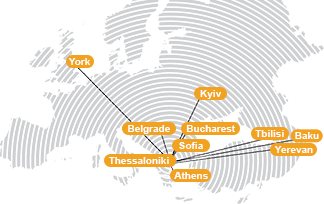

Upcoming events
Related documents
|
SEERC Bi Annual Report 2022-2023 |
|
SEERC Bi Annual Report 2020-2021 |
|
|
SEERC Gender Equality Policy |
|
|
SEERC Gender Data Report 2022 |
|
|
SEERC Bi Annual Report 2019-2020 |
|
|
SEERC 15 Years Brochure Click here to download |
|
|
SEERC Annual Report 2018 Click here to download |
|
|
SEERC Annual Report 2017 |
|
|
SEERC Annual Report 2016 |
|
|
Brief Profile of SEERC 2016 |
|
|
SEERC Annual Report 2015 |
|
|
SEERC Bi-annual Report 2013-2014 |
|
|
SEERC Annual Report 2012 |
|
|
SEERC Annual Report 2011 |
|
|
SEERC Annual Report 2010 Click here to download |
|
|
SEERC Annual Report 2009 Click here to download |
|
|
SEERC Annual Report 2008 Click here to download |
|
|
SEERC Annual Report 2007 Click here to download |
|
|
SEERC GDPR Policy Click here to download |
Share this on
Formal Modelling of Web Service Behaviour in an Enhanced Publication and Discovery Scenario





